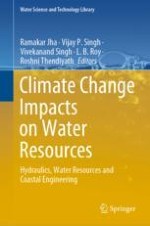This book provides insights and a capacity to understand the climate change phenomenon, its impact on water resources, and possible remedial measures. The impact of climate change on water resources is a global issue and cause for concern. Water resources in many countries are extremely stressed, and climate change along with burgeoning populations, the rise in living standards, and increasing demand on resources are factors which serve to exacerbate this stress. The chapters provide information on tools that will be useful to mitigate the adverse consequences of natural disasters. Fundamental to addressing these issues is hydrological modelling which is discussed in this book and ways to combat climate change as an important aspect of water resource management.
